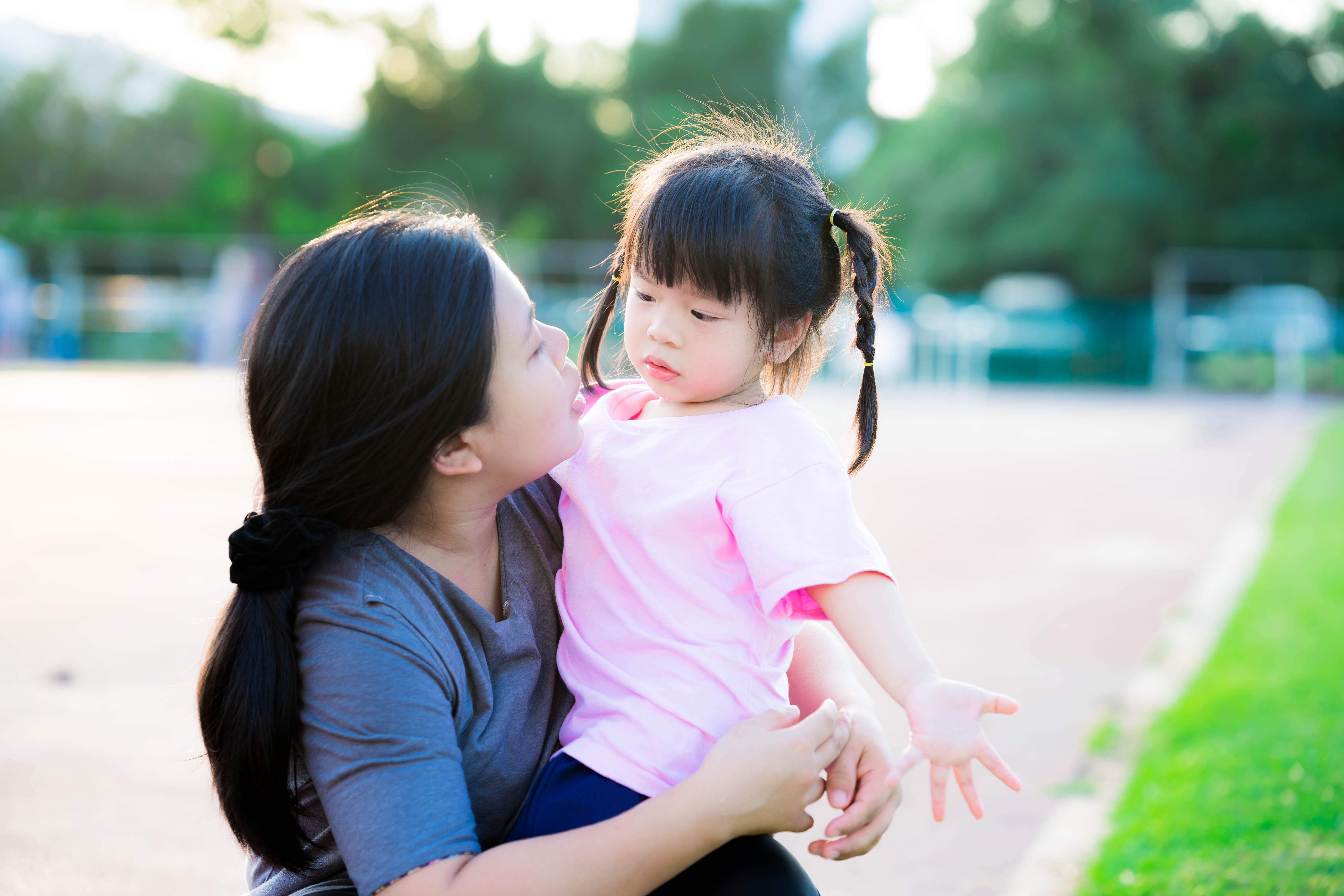
Learning Pushing and Hitting at School
read •

Dr. Laura,
My daughter is just turning 3 yrs old next month. I have tried to follow the gentle
guidance approach with her so far, with extended breastfeeding up until
school began. This gave me the mothering tools to calm her down, and we really
shared a deep connection. This made my job of being a parent a lot easier than I see
with other toddlers around me.
However, when school began there have been several changes I see in her. I am finding it challenging to not use phrases such as "Where did you learn this from? (hitting and pushing)...If you learn such things then I won't let you play with these friends." This is from the fact I know she is picking certain behavior from other children who have been parented differently.
Could there be a better way to handle this behavior? Thank you!
Sounds like you have been very connected to your daughter in these early years, partly because of extended breast-feeding. You've found the secret of a cooperative, happy parent-child relationship – connection!
Your little one is moving from being a toddler to becoming a preschooler, with all of the new-found independence and outside influence implied. That means she is learning from sources besides you. However, if you stay connected and remain her North Star, then she will still rely on you as the arbiter of right and wrong, until she is comfortable doing this for herself. When she brings home behaviors that bother you, she is asking for your guidance.
Your questions could be related to the fact that your daughter has not been breastfeeding since she began school, which is a big change in the mother-child relationship. One result is that we as parents are often challenged to find other ways to calm our children and connect with them. This is true at whatever age weaning occurs.
If you don't already spend "special time" with your daughter every day, this is the time to start. This isn't time when you are reading to her, or doing anything structured, but simply one-on-one time without anything else going on, during which you snuggle, listen to her, and connect. She may well use this time to work through any issues that are bothering her by telling you about what happened at school, asking you to pretend-play a certain game ("You be Rachel at school and I will push you"), or even have a melt-down to release some pent-up emotions. Ten minutes of special time daily is the best way I know to stay connected with a child, and kids who feel connected are always more cooperative.
Now, how should you handle the hitting and pushing that your daughter is bringing home? Our kids will often mimic the behavior they observe in the world, even when that behavior runs counter to what they have seen at home.
Sometimes they are just copying what they have seen others do, experimenting to see what we think of the behavior: Is it allowed? Does it work? Our response will teach them whether such behaviors are useful in getting their needs met. Simple set the limit kindly and firmly by saying "Ouch! Pushing hurts. We don't push in this house." or "Ouch! Hitting hurts! I would never hit you. Please don't hit me. Use your words to tell me you're mad."
If setting the limit does not stop the behavior, it may be a signal that your child is working through a trauma by “repeating” it. Children who are yelled at, humiliated, hit or pushed by peers will often begin to exhibit these behaviors at home, acting as the aggressor. That's because when we're traumatized, we learn both sides of that relationship, and we try to overcome that terrible feeling of powerlessness by asserting power over someone else, just as was done to us.
So how should you react? Simply shutting down the behavior and threatening not to let your daughter play with those children who teach her pushing and hitting won't help your daughter process and integrate her experience. Instead, use these ten steps to help your daughter work through the feelings that are motivating her hitting and pushing:
1. Say what you see:
“You are pushing. You are hitting.”
2. Empathize with the need or feeling behind her actions:
“You're so mad at me.”
3. Listen and empathize:
“Can you tell me why you're mad? Oh, I said it was nap time? You're showing me NO NAP! ”
4. Help her reflect on her experience:
“I wonder if someone has pushed you? I wonder if someone has hit you?”
5. Listen to her response and empathize more:
“Sometimes Rachel hits and pushes you? That makes you mad!”
6. Let her express/vent:
“You are crying and pushing. You are showing me how mad you are.”
7. Go under the anger to help her get to the more vulnerable feelings that the anger is defending against:
“Ouch! It hurts when she pushes and hits. It hurts your body and your feelings. You are crying and crying.”
8. Help her to reconnect with you as the storm passes:
“I'm right here to hold you, Sweetie. It's ok to cry. I love you no matter what.”
9. After everyone is calm, express honestly how her behavior makes you feel,
using “I Statements” and going under your anger to the more vulnerable feelings your anger is defending against: “When you push or hit, it scares me. We don't push or hit people we love. I don't want you to push or hit me.”
10. Give your daughter tools for the next encounter:
“Pushing and hitting hurt. I would never push or hit you. I don't want anyone to push or hit you. What can you say to Rachel when she pushes or hits you?”
These ten steps may sound complicated, but it's really just a matter or empathizing so your daughter can access her own feelings and express them safely to you. Once she's done that, they won't control her any more. Then, you can simply express your own needs, and you'll find her much more likely to try to meet them.




